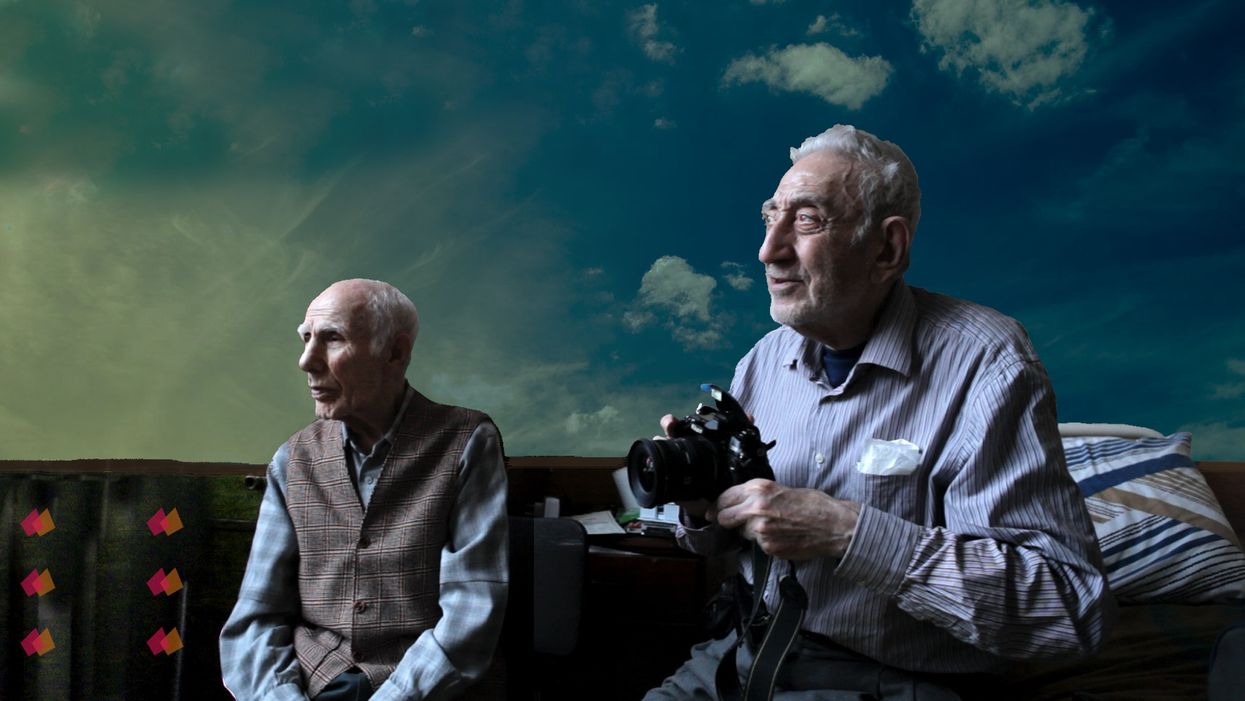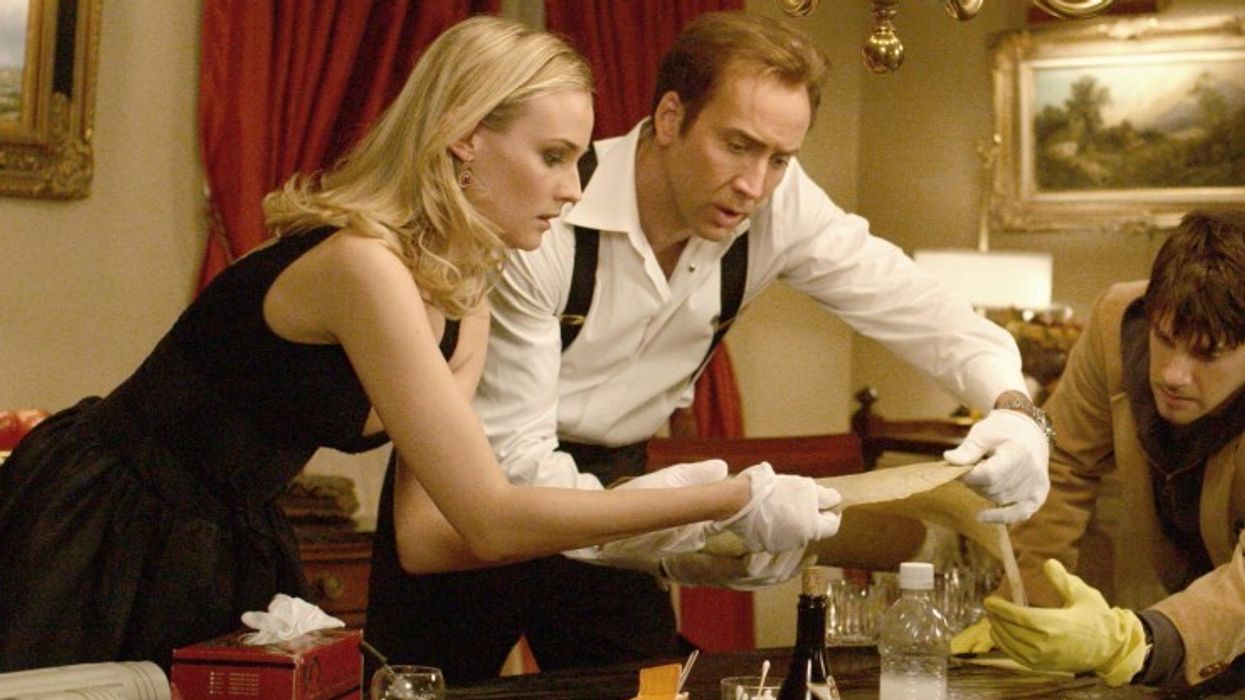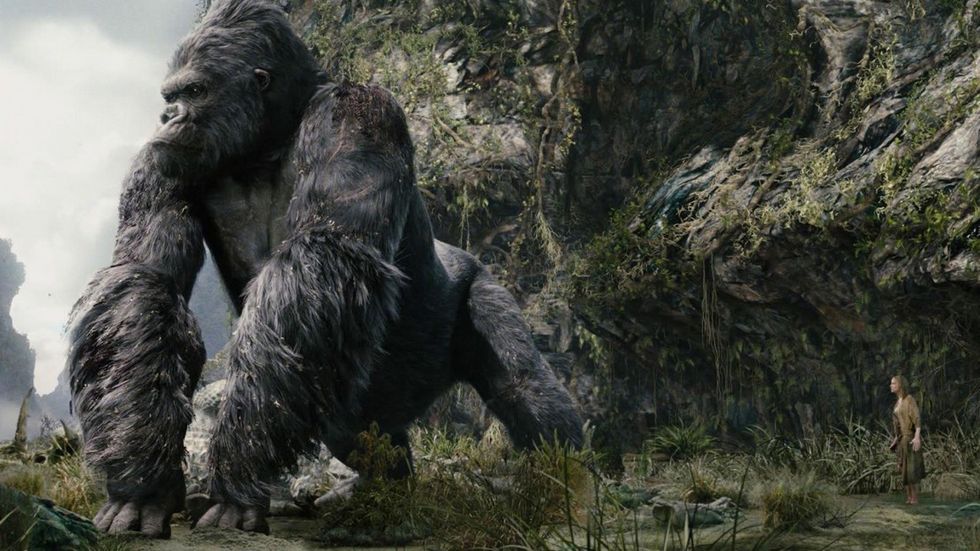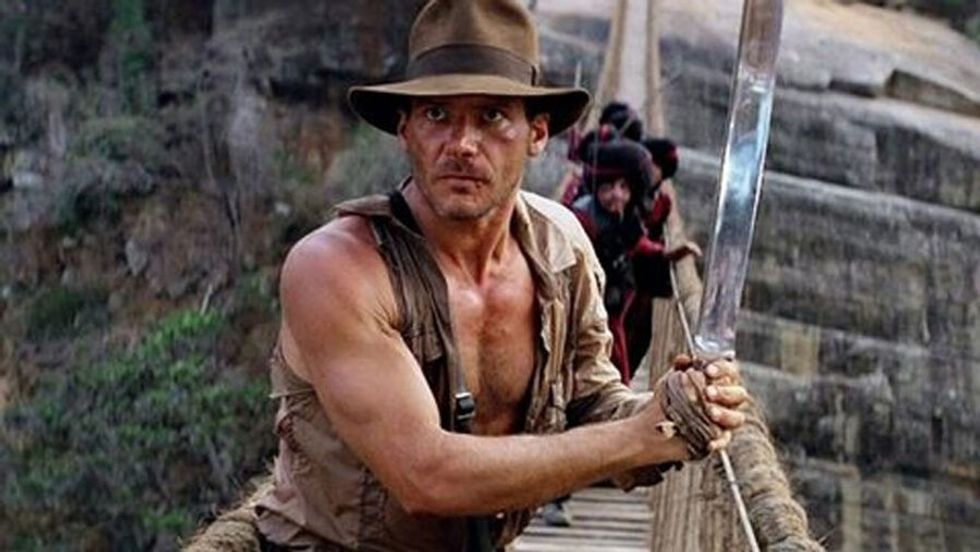The Challenges (and Possibilities) of a One-Person Crew: Shevaun Mizrahi on 'Distant Constellation'
This documentary from a debut feature filmmaker is wise beyond its years, as are its subjects.

A haunting ethereal stillness presides over Distant Constellation, sustaining itself just long enough to be a portrait of remembrance and reflection, longing and ennui. A delicate debut feature by Shevaun Mizrahi, the documentary sets up shop in a Turkish retirement home, coming across several colorful characters who are less props than actual characters with wants and desires. Some wish for romance, some for a friendship, and others to have their stories told before going off into the distance anonymously.
As crucial moments of time pass over the discussion of the novel Lolita, as a tired woman reflects on her experience during the Armenian genocide, and as an elevator takes two rambunctious men repeatedly up and down the floors of the film's main location, the shape of the film comes to fruition: a series of moments, a process of waiting taking place before our very eyes. While outside construction remains a constant presence (and one could argue, hindrance), there remains a reflective calm within the walls of this home for the elderly; this very visual doc is also an oral history worth hearing.
As Distant Constellation opens in theaters this weekend, No Film School spoke with Mizrahi about directing her first feature, being an assistant to Ed Lachman, her film school experience at NYU, and much more.
No Film School: You attended New York University for graduate school, and I was wondering what that experience was like for you and how it influenced your work as an image-maker?
Shevaun Mizrahi: I wanted to be a cinematographer. I had come from a background of still photography and it was really the main reason I had decided to go to grad school, to get a greater technical education. I applied to Cal Arts and Columbia and NYU, and NYU was where I received a scholarship, and so the decision was mainly financial. Once I got into the program, I don't think they [NYU] really knew what to do with somebody like me. I was outside of the commercial approach they were teaching, on a more experimental path.
I would say that most of what I learned at NYU came from my classmates. Two of my classmates have remained very close, and they are the two producers on this film, and one of them also co-edited it, Shelly Grizim. I would say the most lasting, meaningful thing to come out of the program was the relationship with the other students and the community surrounding the program.
"For this film, we all stepped in and did everything, due to being such a small group and due to a lack of funding."
NFS: Did you collaborate with fellow students on their projects as well?
Mizrahi: Definitely. It just so happened that I made the first feature first, but for Shelly, I shot one of her films, and for Deniz Buga [the other producer on Distant Constellation] I did sound on one of his short films, Incomplete Stories of New York. We were always rotating like that. I loved to work on their projects, whatever they happened to be doing, and we've always worked nicely as a group regardless of what position we had.
For this film, we all stepped in and did everything, due to being such a small group and due to a lack of funding. None of us had ever brought a feature film to this level through to completion and sharing it with the world. It was like a new set of skills, and so we were all learning and experimenting and understanding how things worked together.

NFS: What did working as an assistant to Ed Lachman teach you about cinematography that you could then apply to your own work?
Mizrahi: I would say that my real education, or understanding of what the field was, came directly from my time with him. It spanned many years and covered a lot of different aspects of making a movie, from pre-production to post. Ed often works from still images, and he's very influenced by the work of Saul Leiter and other artists, like Edward Hopper. There's a long list of other people as well, but when he's coming up with storyboards and a visual approach to a film, he puts all of these art books out and goes through a process where he's translating these static concepts into a moving image with a visually unified use of composition, color, texture, and light.
To understand that process was very meaningful, and then to also understand the different kind of personalities and aesthetics that he had to adapt to in order to execute and create the looks of different directors...for me, as a shooter, I've realized I'm less adaptable than he is. I felt like I could capture things in the way that I wanted to, but then I wouldn't necessarily be as versatile as he was. That led me to wanting to explore making my own films and directing, as opposed to being a cinematographer, and so that was the beginning of the journey.
"Because I was working with older subjects and there was very little movement from them throughout filming, it also provided a good fit for me in terms of subject matter, because it's very similar to working in still photography."
NFS: There's a stillness to much of the imagery on display in Distant Constellation. Was this intentional? Does your filmmaking serve as an extension of your previous still photography work?
Mizrahi: Oh, definitely. I think there's a fairly coherent visual vocabulary that I'm excited to develop through time and continue onto the next project as well. I definitely see those things as being very connected, and the film itself is mainly shot on a tripod (95% of the images) and so it was very much approached from a still photography way of framing static compositions.
Because I was working with older subjects and there was very little movement from them throughout filming, it also provided a good fit for me in terms of subject matter, because it's very similar to working in still photography.

NFS: What was the men and women's understanding of the film you were trying to make?
Mizrahi: The idea was, firstly, that they wanted to be part of making something together. That wasn't true of everybody there, and so it was very important to me that they had a desire to be involved. The context of the film was also growing through time, as was the central tension of the inner and outer world, this inner chamber of memory and the outer transformation happening outside of the windows of that home, that tension was clear from the beginning, but it's the way that it unfolded that was unknown, and it happened as the process was going forward.
I didn't ask questions. I just wanted them to speak freely on whatever subject was meaningful to them. For example, I didn't tell the photographer to take photos or talk to me about his camera, but because that was the thing he cared most about, our conversations always returned to that.
The approach was to channel a stream of consciousness, internal reality of thoughts and memories. The way I experienced this during our time together, through our friendships, I wanted to project that into a moving image. It was a challenge, because it's not really according to any plot point, but more about building an atmosphere. It's about building an emotional atmosphere, a kind of energy of warmth and reflection.
"I think when you realize something is no longer going to be the same that you're used to experiencing it as, it creates a desire to capture what it was in some way."
NFS: As the film is very interior-based and restricted to this elder facility, were you attempting to find a multitude of ways to bring in the outside world?
Mizrahi: Yeah, I think that was one of the reasons that I decided to make the film. Around 2011, the area started to go through a really massive change, and I think you realize something is no longer going be what it was. It creates a burning desire to possess the present moment, as a deeper immersion into what it is now, or in an effort to memorialize it. In the case of this film, it was the former.
I really mapped out that area and the development side of things that was happening. It creates this tension, and without that, it would have been very difficult to craft a story and film with just the stories of the residents. It definitely created something visually dynamic, and this idea of their stories being time-capsuled, varied by the modern structures that are built on top of that, also works nicely in terms of that theme.

NFS: What kind of camera did you shoot with? Was there a particular reason?
Mizrahi: Well, we didn't get funding for the film. I had worked many shooting jobs thanks to the equipment that I already had for work (which was just the Canon DSLR with a Canon 24-70mm lens, a tripod, a few bounce boards, a sound recorder, and a set of lavalieres). I was operating two systems, the sound system and the camera, and mixing levels on the sound recorder, and then doing the camera work and arranging the lighting with the bounce board. That was sort of how the setup was.
NFS: How did you go about making a plan for your sound design, with the brisk wind heard over the audiotrack that emphasizes the freezing nature of the third act, for example?
Mizrahi: The sound design and color of the film are very connected for those two aspects of film production, that was something I developed alongside Shelly Grizim, who was my classmate and co-editor of the film. We realized that we needed a soundscape that lifts you up a bit. I mean, a soundscape that really focuses your attention on the more mystical and existential aspects of the film, as opposed to dark, factual, or somber tones. There's a term by Chris Marker, "sci-fi anthropology", and it's one we often used to describe how we wanted to build this reality amid this supernatural science fiction genre.
NFS: And were you looking at films like Sans Soleilfor guidance?
Mizrahi: Oh, definitely. We weren't watching them while we were making it, but they were films that we had seen so many times and thus were under our skin. Different approaches to documentary filmmaking were really appreciated, and I wanted to get away from having title cards and name cards and dates and instead provide a bit more attention to the building up of atmospheric elements. I wanted to give as much attention to form as content.
"I think every process offers a lot advantages and disadvantages, and not having funding means you don't need to get permission to do anything."
NFS: Was there any touchup work done in post-production? The imagery outside of these men and women's windows looks incredibly refined, at times almost too lovely for this Earth, and there is a visual effects crew cited in the film's end credits...
Mizrah: Those people are all friends of mine. We didn't have a budget for special effects, but they're friends, and so Shelly and I would come up with concepts and various friends would try to execute them (who had more proficiency with After Effects and things like that). But most of the matting and compositing, I did myself through a process of layering on the timeline. I recently did an article in Filmmaker Magazine that talks a bit about that.
I was coloring the film as I was editing it, which was throughout those many years, and so the color (and this compositing that I was doing) was happening really gradually and emerged in a very natural way that wasn't necessarily intentional. Once I understood that I was going to be doing that, when I went to shoot on location, I could shoot in a way that would facilitate that.
I was shooting in preparation for the edited post-production, which is one of the really beautiful things about shooting and editing your own work, that you can shoot to edit, since you have a pretty clear idea of how it's going to come together in the end.
NFS: Having now made your first feature documentary, what advantages and disadvantages did being a "one person crew" present you with?
Mizrahi: There's a lot of great films out this year that were made with small crews or just one person. I know working alone is something I was always expected to do for work, and often operating three cameras at once plus sound. I was used to that and could almost do it in my sleep. Of course, you want a budget and you want to involve more people and have the sound to be as good as possible, but I'm not sure, given the intimacy and comfort and ease and warmth of this project, it would have been possible with more people there in addition to myself.
I think every process offers a lot advantages and disadvantages, and not having funding means you don't need to get permission to do anything. You can do it exactly as you want. You can work within your own timeline. You don't have to report to anyone. You also get to learn new skills, and here I learned how to color a film; I had never colored a film before. Other filmmakers sometimes ask me to come work as a colorist now, which is not my training!
I guess you get the opportunity to learn a lot. I got really into sound design and sound recording as a result of this film and it's been really exciting. Learning new things is always an exciting part of anything.
For more information on 'Distant Constellation,' click here.


 'Indiana Jones And The Temple Of Doom'Credit: Paramount Pictures
'Indiana Jones And The Temple Of Doom'Credit: Paramount Pictures









